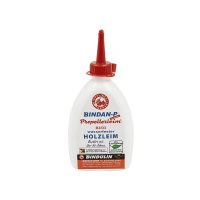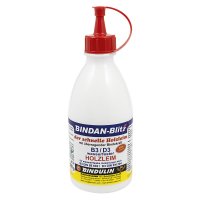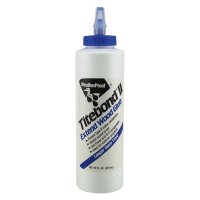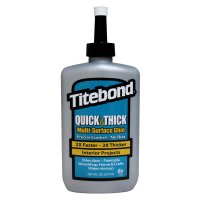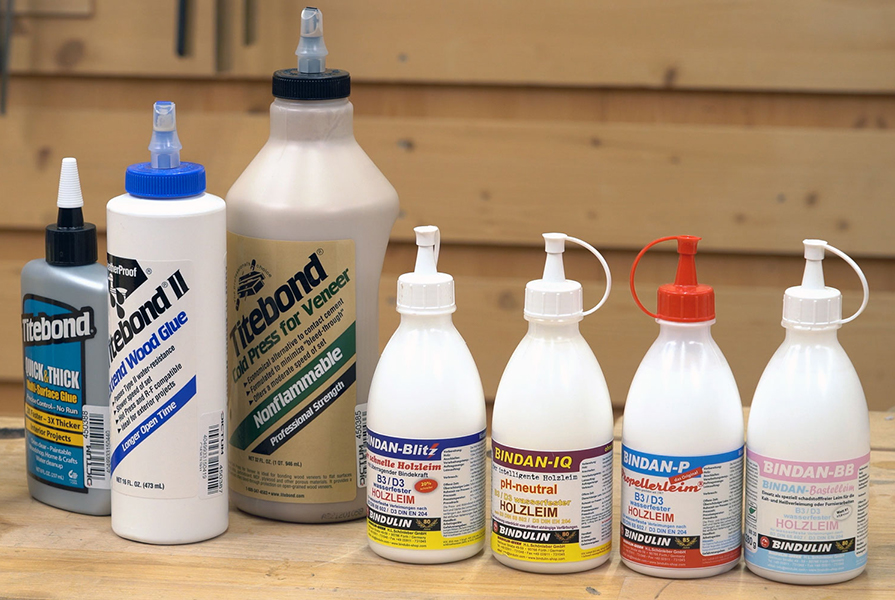
In the DICTUM Workshop Centre, our go-to choices for furniture-making projects are typically Titebond Original and Titebond 2 Premium. However, there are occasions when a specific wood glue becomes essential due to unique demands placed on the adhesive. In this blog post, we present a selection of wood glues that offer tailored formulations to meet specific needs. The formulation is the adhesive’s composition and its resulting properties.
First off: there is an appropriate adhesive for every task. Attempting to cover them all in a single post would be an impossible feat. Therefore, we will focus exclusively on wood glues, also known as polyvinyl-based adhesives or white glues, in this post.
Which adhesive offers the strongest bond?
In construction, especially in applications like windows and doors, adhesives are subjected to significantly higher stresses compared to furniture making. The demands are also greater in assembly work and interior finishing, where glue joints in wood floors and parquet, for example, face constantly changing loads. In these cases, the wood glue must not only be waterproof but also possess a high strength. For wood glues, the usual metric to evaluate strength is breaking strength.
Among the adhesives offered by DICTUM, Bindan®-Blitz Wood and Assembly Glue boasts the highest breaking strength at 1400 kg/cm² (corresponding to the requirements of EN 204/205). This adhesive quickly develops strength, with a clamping time of only 16 to 24 minutes, making it an excellent choice for assembly work and laying pre-finished parquet and laminate flooring.
For more complex components that take longer to apply glue to all surfaces and position the parts correctly, Bindan-P »Propeller Leim«® Wood Glue also offers a breaking strength of 1400 kg/cm², but it has a slightly longer »open time« of 5 to 10 minutes compared to Bindan-Blitz. This »open time« is necessary for proper evaporating and allows for assembly towards the end of this period (referred to as »open assembly time«).
Which glues are suitable for application on large surfaces?
The »open time« is also an important factor when glueing large surfaces. The larger the area, the more challenging it becomes to fully coat it with glue within the »open time«. This situation often arises when veneering door panels, tabletops, and in bent wood laminations, for example.
For large-area glue application, Titebond® II Extend Wood Glue is highly suitable, offering a 15-minute »open time«. It is also suitable for hot pressing, such as in a professional veneer press. Furthermore, it can be processed without concern even in temperatures as high as 30 °C during the summer (most glues have a processing temperature range between 10 and 20 °C).

Time is an important factor in large-area glue application
With veneering there is the additional issue of »bleed-through«, especially with open-pored woods, which can complicate finishing such as staining and varnishing. Titebond® Cold Press Veneer Glue also provides an extended »open time« and is formulated to reduce bleed-through.
Is there an invisible wood glue?
As mentioned earlier, we primarily use Titebond adhesives, often referred to as »Yellow Glue« due to the yellowish glue line they create. However, there are situations where this colouration can be distracting, especially with very dark or very light woods or when the glue line should be as inconspicuous as possible, such as with invisible wood hinges.
As its name suggests, Titebond® Translucent Wood Glue forms a transparent glue line and is otherwise a versatile adhesive with a short clamping time (20 minutes) suitable for general household and furniture-making applications. Titebond® II Dark Wood Glue shares similar properties with regular Titebond® II Premium Wood Glue but is tinted to create a brown glue line. This makes it particularly well-suited to darker woods like teak or iroko.
How do you prevent glue stains or discoloration?
A slightly different issue arises with light-coloured, tannin-rich woods such as maple, chestnut or larch. Regular white glue has an acidic pH value, which can lead to unsightly stains and discolouration when it comes into contact with tannins and other wood constituents.
Bindan-IQ® Wood Glue is pH-neutral and, as a result, prevents staining in these types of woods. However, it is not suitable for oak, which is prone to discolouration due to its iron content.
Tip: When glueing tannin-rich woods like oak or ash, always use a glue brush without a metal ferrule, such as the Glue Brushes with Natural Bristles.
Which wood glue is suitable for toys or chopping boards? Which glue is non-toxic?
In essence, almost all white glues, or PVAc glues, are safe for use in children's toys once they have fully cured. However, we are often asked about glues for cutting boards. If you want to be on the safe side, you should use a wood glue that is free of harmful substances.
Bindan-BB® Wood Glue is a polyvinyl dispersion and, according to the manufacturer, completely free from harmful substances, thus suitable for sensitive areas such as bedrooms, children's rooms, kindergartens, etc. You can also use it confidently for crafting with children.
Which white glue does not drip?
Especially during finishing work when only the final edge bands or profiles need to be glued, a thin, runny glue can be quite troublesome. Dripping glue can easily soil the already finished surface or even land on your face. Additionally, you may not want to hold the parts for an extended period, and clamping might not always be feasible.
Titebond® No-Run, No-Drip Wood Glue is a thick, non-dripping glue. This characteristic makes it excellent for vertical glue joints and overhead applications such as crown and ceiling mouldings or reveals. It also provides a good initial tack while allowing you to adjust and properly position the parts.
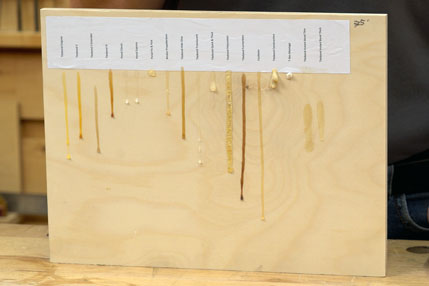
The viscosity of adhesives and glues can vary significantly

